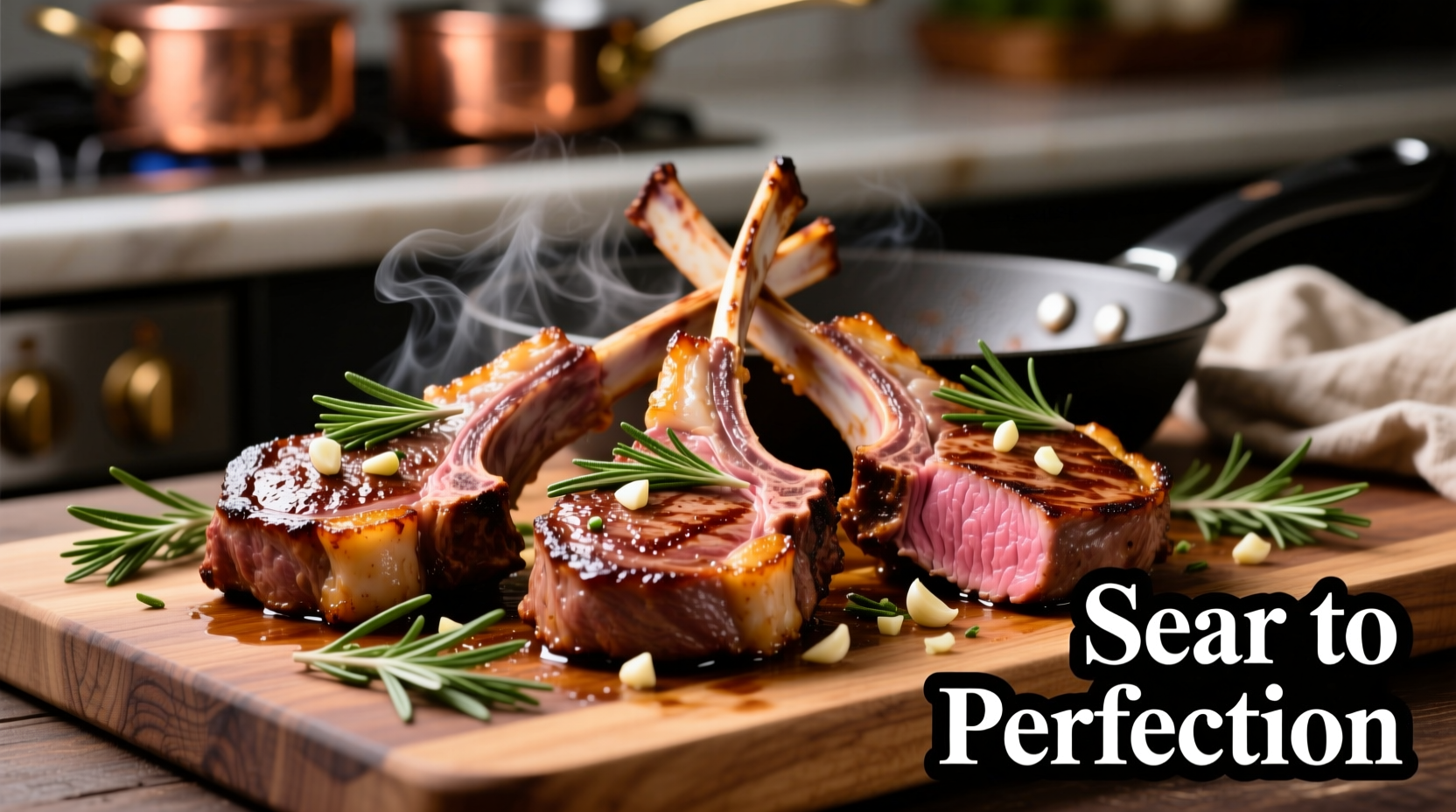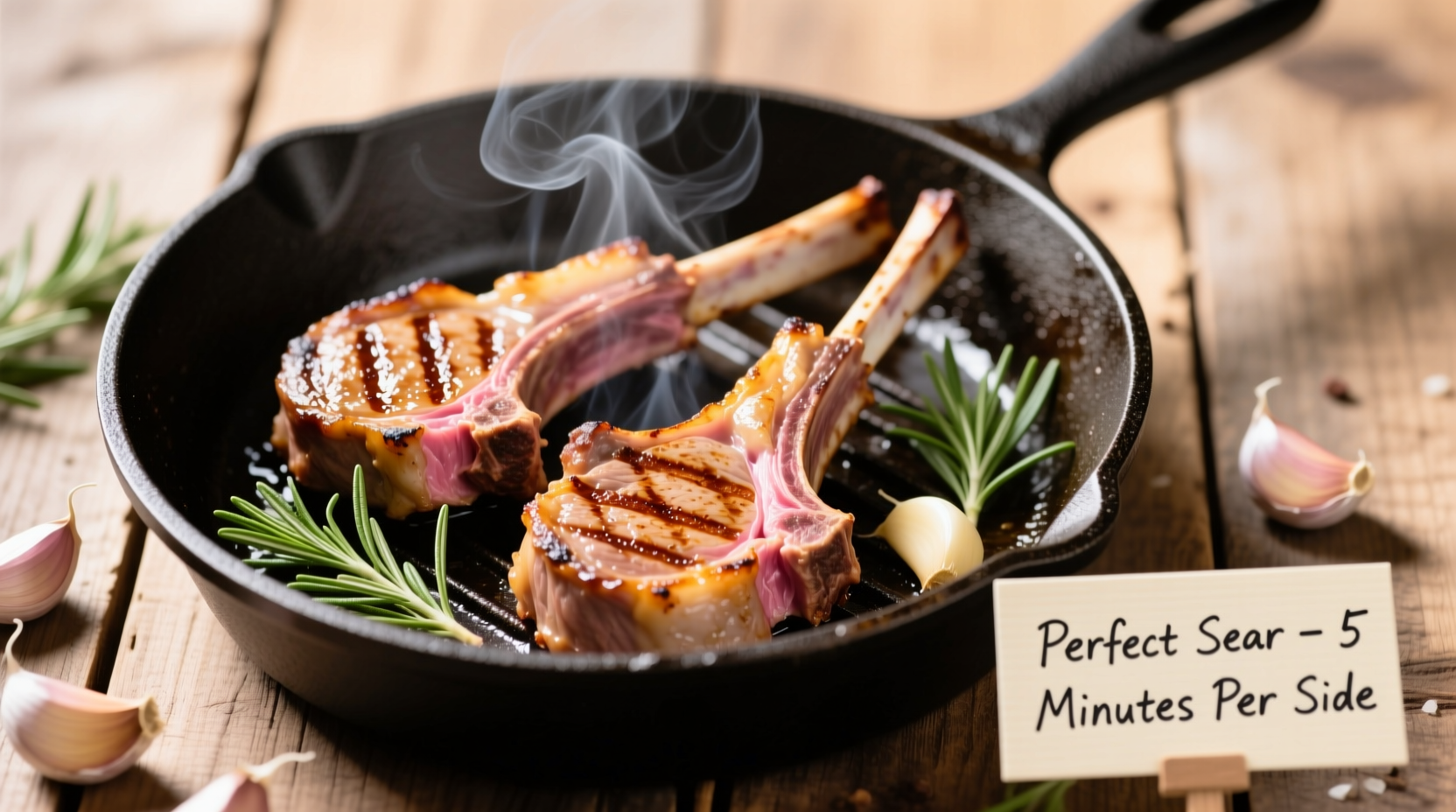Perfectly cooked lamb chops require selecting quality meat, proper seasoning, precise temperature control, and adequate resting time. For medium-rare results, cook to an internal temperature of 130-135°F (54-57°C), then rest for 5-7 minutes before serving. Pan-searing followed by oven finishing delivers restaurant-quality results at home.
Nothing elevates a weeknight dinner like perfectly cooked lamb chops with a golden crust and tender, rosy interior. Whether you're using rib chops, loin chops, or shoulder cuts, mastering this protein transforms your cooking repertoire. In this guide, you'll learn professional techniques that guarantee succulent results every time—no more dry, overcooked meat or disappointing meals.
Selecting Quality Lamb Chops
Choosing the right lamb chops sets the foundation for success. Look for cuts with fine marbling—those delicate white fat streaks throughout the meat—which melt during cooking to enhance flavor and tenderness. The USDA recommends selecting lamb with bright red meat and creamy-white fat, avoiding any with dark spots or dry edges.
Rib chops offer the most tender experience with their signature 'lollipop' bone, while loin chops provide generous meat portions ideal for special occasions. Shoulder chops, though less expensive, require slower cooking methods due to their connective tissue content. For optimal results when learning how to cook lamb chops perfectly, start with 1-1.5 inch thick rib or loin chops.
Essential Preparation Techniques
Proper preparation separates good results from exceptional ones. Remove lamb chops from refrigeration 30-45 minutes before cooking to bring them to room temperature—this ensures even cooking. Pat the surface thoroughly dry with paper towels; moisture prevents proper searing.
Season generously with coarse salt at least 45 minutes before cooking, allowing it to penetrate the meat. For best flavor when cooking lamb chops, add freshly cracked black pepper and dried herbs like rosemary or thyme just before cooking to prevent burning. If marinating, limit acidic components (lemon juice, vinegar) to 2 hours maximum to avoid texture deterioration.
| Doneness Level | Internal Temperature | Visual Characteristics |
|---|---|---|
| Rare | 120-125°F (49-52°C) | Bright red center, very soft to touch |
| Medium-rare | 130-135°F (54-57°C) | Pink center, warm red, slightly springy |
| Medium | 140-145°F (60-63°C) | Light pink center, firmer texture |
| Medium-well | 150-155°F (66-68°C) | Small pink area, quite firm |
| Well-done | 160°F+ (71°C+) | No pink, very firm, risk of dryness |
USDA Food Safety and Inspection Service recommends minimum internal temperature of 145°F (63°C) for lamb, followed by 3-minute rest time. Many chefs prefer medium-rare (130-135°F) for optimal tenderness and flavor.
Mastering Cooking Methods
For perfectly seared lamb chops every time, the two-stage cooking method delivers consistent results:
- Pan-sear: Heat 1-2 tablespoons of high-smoke point oil (avocado or grapeseed) in oven-safe skillet over medium-high heat until shimmering. Place chops in pan without crowding, pressing gently for full contact. Sear 2-3 minutes until deep golden crust forms.
- Flip and aromatics: Turn chops, add crushed garlic cloves and fresh rosemary or thyme sprigs to the pan. Tilt pan and spoon hot oil over chops continuously for 1 minute.
- Oven finish: Transfer skillet to preheated 400°F (200°C) oven. Cook 4-8 minutes depending on thickness until reaching desired internal temperature.
This lamb chop cooking technique for beginners prevents overcooking while developing complex flavors. For thicker cuts (over 1.5 inches), this combination method works significantly better than pan-only cooking.

Avoiding Common Mistakes
Even experienced cooks make these critical errors when preparing lamb chops:
- Moving too soon: Let chops release naturally from the pan—forcing them causes tearing and prevents proper crust formation
- Overcrowding the pan: Causes steaming instead of searing; cook in batches if necessary
- Slicing too soon: Resting for 5-7 minutes allows juices to redistribute; cutting immediately releases precious moisture
- Relying on time alone: Thickness variations mean time guidelines are unreliable; always use a meat thermometer for accurate lamb chop temperature control
Contextual Cooking Guidance
Not all cooking methods work equally well in every situation. Understanding these context boundaries ensures success:
- Thin chops (under 1 inch): Best cooked entirely on stovetop with careful monitoring—oven finishing often leads to overcooking
- Grilling limitations: Direct high heat works for thinner cuts, but thicker chops require two-zone grilling to prevent exterior burning before interior cooks
- Cold kitchen environments: Increase initial sear time by 30-60 seconds to compensate for heat loss when adding cold meat to the pan
- Cast iron vs. stainless steel: Cast iron retains heat better for consistent searing but requires more oil to prevent sticking compared to properly preheated stainless steel
Serving and Pairing Suggestions
Maximize your how to cook lamb chops successfully results with these finishing touches:
- Rest chops 5-7 minutes tented with foil before serving—this crucial step maintains juiciness
- Drizzle with high-quality extra virgin olive oil or compound butter for added richness
- Pair with roasted root vegetables and mint chimichurri for classic flavor combinations
- Complement with medium-bodied red wines like Pinot Noir or Syrah that won't overpower the delicate lamb flavor
For special occasions, consider adding a simple pan sauce: after removing chops, deglaze the skillet with ¼ cup red wine or broth, scraping up browned bits, then whisk in 1-2 tablespoons cold butter until glossy.











 浙公网安备
33010002000092号
浙公网安备
33010002000092号 浙B2-20120091-4
浙B2-20120091-4